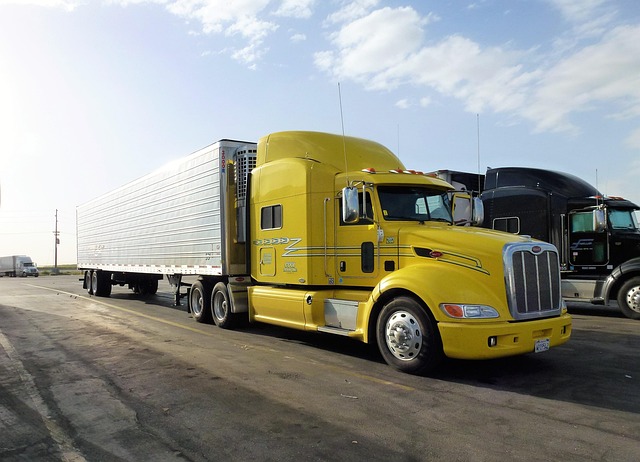Looking to register your car in California? This comprehensive guide walks you through every step, ensuring a smooth process. From understanding the necessary requirements and gathering essential documents to completing the DMV VIN verification, we’ve got you covered. Learn how to ensure proper insurance and license plate placement post-registration. Streamline the process with our detailed instructions for a seamless car registration experience in California.
- Understand Requirements for Car Registration in California
- Gather Necessary Documents for DMV Visit
- Perform Vehicle Identification Number (VIN) Verification
- Complete Registration Process at the DMV Office
- Ensure Proper Insurance and License Plate Placement
Understand Requirements for Car Registration in California

Before registering your car in California, it’s crucial to understand the requirements set by the Department of Motor Vehicles (DMV). One essential step is the DMV VIN verification process, which ensures that your vehicle meets safety and environmental standards. This involves checking the vehicle identification number (VIN) against the manufacturer’s records to validate its authenticity and history.
A mobile vin verifier or a vin inspection service can streamline this process by providing on-site or remote verifications, allowing you to save time and effort. In California, these services are particularly useful as they help ensure compliance with local regulations while making the registration process more convenient for both individuals and dealerships.
Gather Necessary Documents for DMV Visit

Before heading to the DMV, ensure you have all the required documents and proof of ownership prepared. This process typically involves gathering important papers such as your vehicle’s registration, proof of insurance, and a valid driver’s license. Additionally, you’ll need the Vehicle Identification Number (VIN) verification report, which can be obtained through a mobile vin inspection or by visiting a DMV office for a formal vin verification.
A mobile vin verifier can streamline this step by providing a quick and convenient service right at your location. Alternatively, if you choose to conduct a dmv vin verification in person, make sure to bring along any relevant records related to previous registrations or title transfers. Properly organizing these documents will help ensure a smoother process during your visit to the DMV.
Perform Vehicle Identification Number (VIN) Verification

Before registering your car in California, it’s crucial to ensure that your vehicle’s details match its unique Vehicle Identification Number (VIN). The DMV requires a VIN verification process to confirm the vehicle’s identity and history, which is essential for ensuring compliance with state regulations. This step involves cross-referencing the provided VIN with accurate information from various reliable sources.
One convenient method for performing this verification is through a mobile vin inspection or using a mobile vin verifier app. These services allow you to quickly and easily access detailed vehicle histories directly from your smartphone, making the process efficient and hassle-free. By utilizing these modern tools, you can rest assured that your car’s registration in California will be a smooth and secure experience.
Complete Registration Process at the DMV Office

To complete the registration process for your car in California, you’ll need to visit a DMV office. This is where you’ll undergo several essential steps, including a DMV VIN verification. When you arrive at the DMV, bring all necessary documents such as proof of ownership, insurance, and identification. A valid driver’s license or state-issued ID card is typically required for this process.
During your visit, a DMV representative will guide you through the registration procedure. They’ll inspect and verify your vehicle’s VIN (Vehicle Identification Number) to ensure it matches the information on the title and other documents. This step is crucial as it helps protect against fraud and ensures that your car’s registration complies with California’s regulations. For convenience, some individuals opt for a mobile VIN inspection or use a mobile vin verifier to streamline this part of the process before visiting the DMV.
Ensure Proper Insurance and License Plate Placement

Before registering your car in California, proper insurance coverage is mandatory. Check with reputable insurance providers to find a plan that meets the state’s minimum requirements and aligns with your vehicle’s value. Once insured, schedule an appointment for a DMV VIN verification—a crucial step ensuring your car’s authenticity. This process involves a detailed inspection of your vehicle’s unique Vehicle Identification Number (VIN), which can be quickly and conveniently completed using a mobile vin verifier.
Proper license plate placement is another essential aspect. Ensure the plates are securely fastened, clearly visible, and meet California’s dimensions and design standards. A properly placed license plate not only enhances safety but also contributes to a seamless registration process. After confirming insurance and ensuring your car passes the vin inspection, you’ll be ready to complete the registration at your nearest California DMV office.
Registering a car in California involves understanding specific requirements, gathering essential documents, and completing a series of steps. By performing a DMV VIN verification, ensuring proper insurance coverage, and correctly placing license plates, you can navigate the process efficiently. Remember to keep all necessary paperwork up-to-date for seamless future interactions with the DMV.



